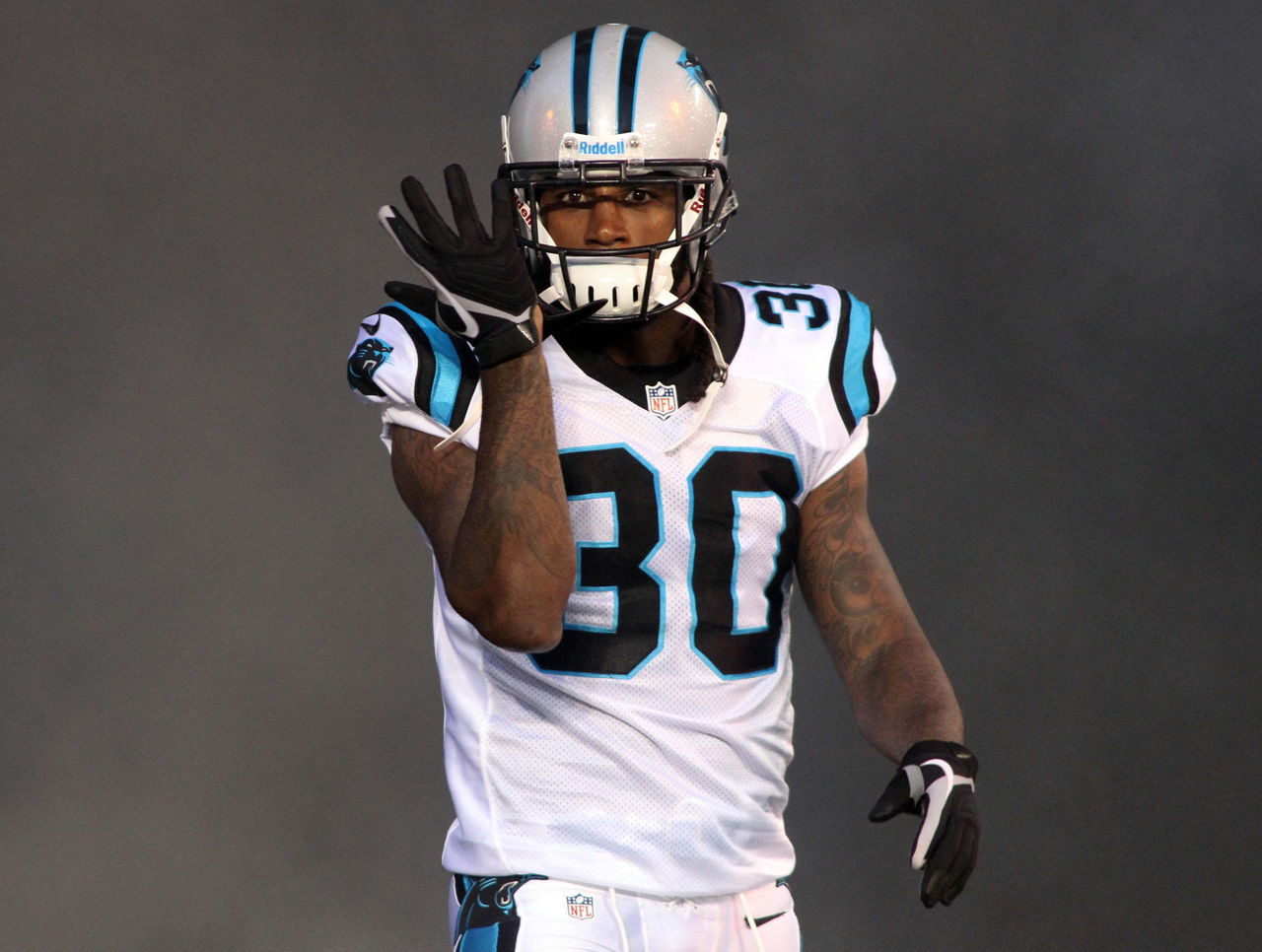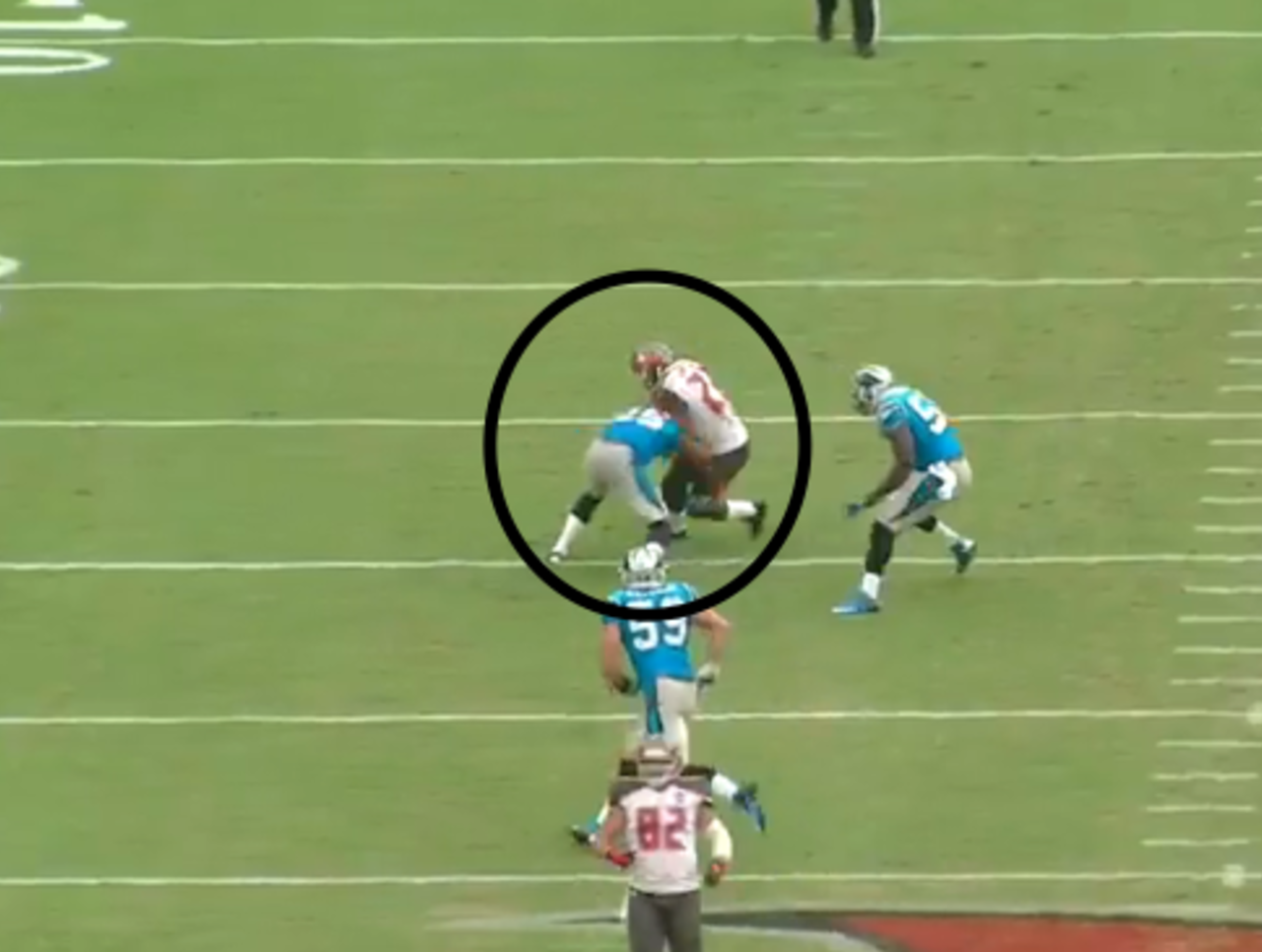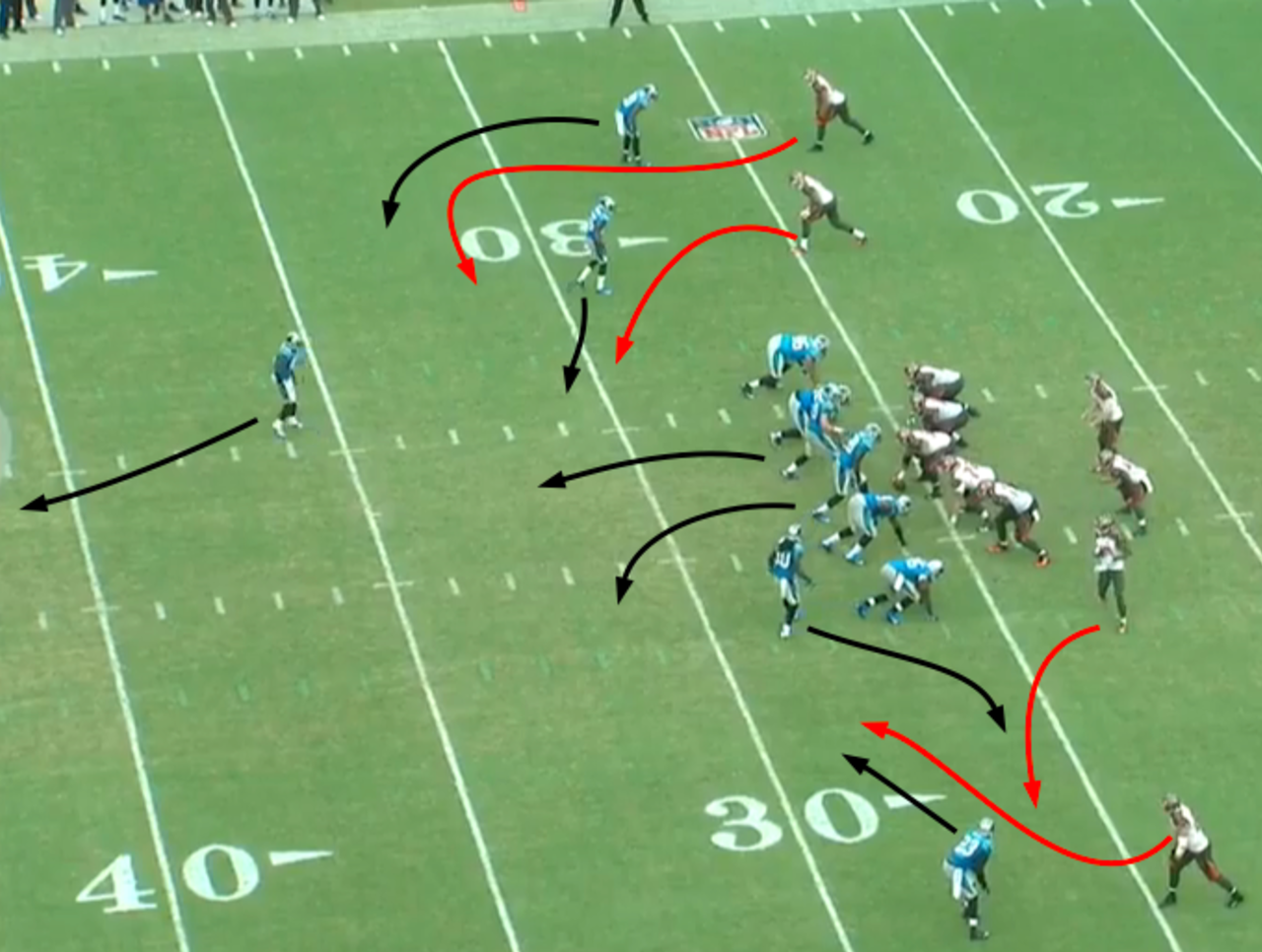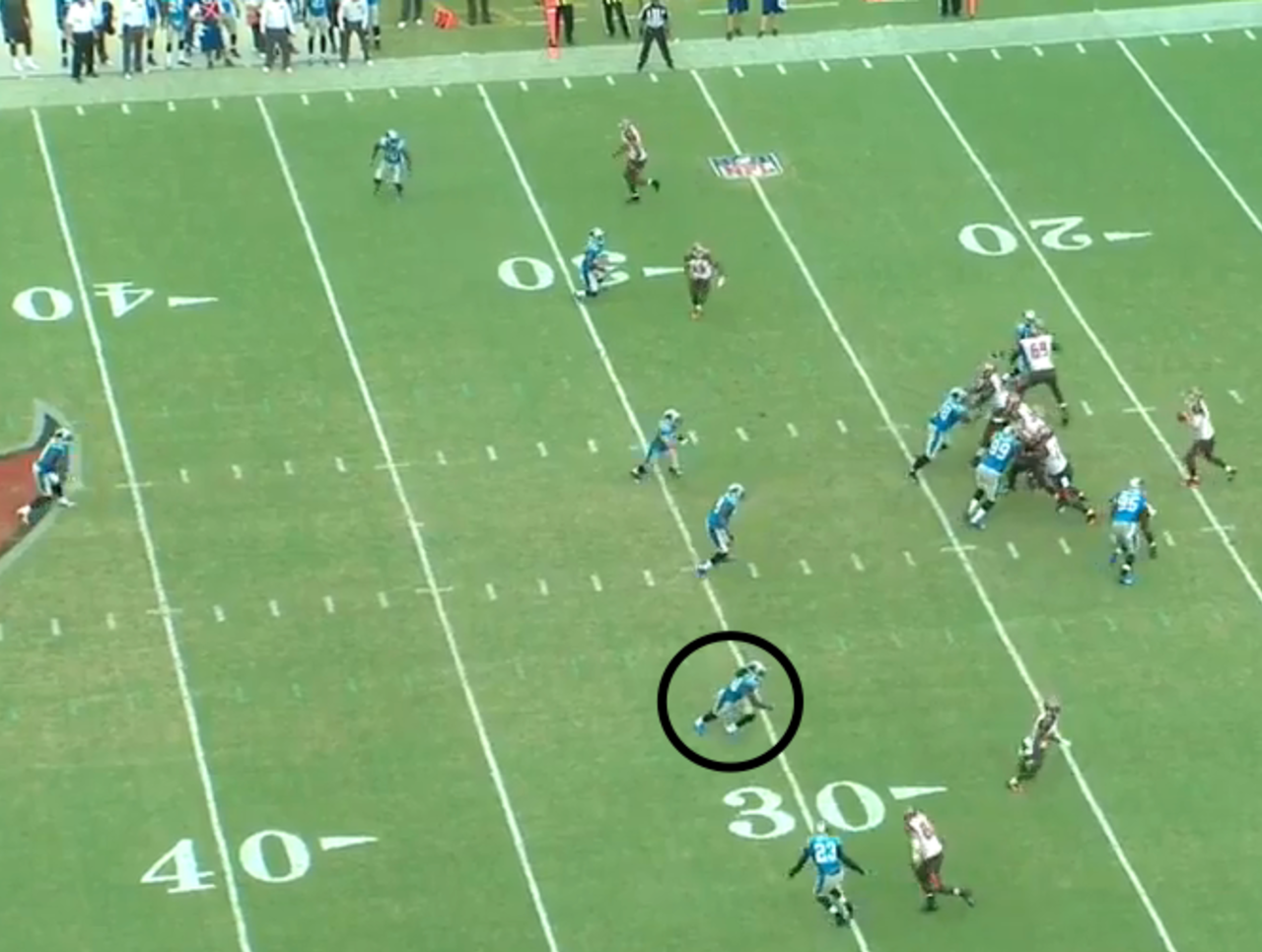Film Room: The secret to the Panthers' defensive success
When Dave Gettleman sits down to construct his defense, he keeps roster fundamentals in mind.
Games are won in the trenches, so it's best to invest there. Speed is optimal in the middle of the field. The secondary, regardless of cost, won't carry the defense. It rarely does. That's why it's best to put together a group of versatile defensive backs, who play with strong fundamentals, technique and complementary skills.
He learned this during his 15 years with the New York Giants. Load up on pass rushers and put together a secondary that can rely on the aforementioned traits to shut down passing games.

Since being hired as the Panthers general manager in 2013, Gettleman’s added defensive tackles Star Lotulelei and Kawann Short to an already ferocious front led by defensive ends Charles Johnson and Greg Hardy. And in the secondary, he’s looked to castoffs to fill holes and add to what others already bring.
He added free safety Mike Mitchell for a year when he was discarded by the Oakland Raiders. When Mitchell went to the Pittsbugh Steelers for a $25 million contract, Gettleman replaced him with Thomas DeCoud, who had been sent away by the Atlanta Falcons.
DeCoud is rangy and with a little bit of work in discipline and angles, he is essentially the same player as Mitchell in the deep middle for $3.75 million.
Another cast-off added was strong safety Roman Harper, previously of the rival New Orleans Saints. Harper is a liability in pass coverage because he lacks speed and hip flexibility, but with reduced snaps he's a useful blitzer for a defense that frequently blitzed a defensive back last season.
The Panthers allowed a league-low 3.8 yards per play when blitzing a defensive back, according to Football Outsiders. But with Harper, they may not allow a pass attempt at all; he has 17 sacks since 2006, the most at his position.
And then there's Charles Godfrey. He's shifted between safety and nickel cornerback this off-season, with some struggles at the latter. But in Week 1 against the Tampa Bay Buccaneers, the seven-year Panthers veteran was versatile, disciplined and fundamentally sound, shutting down passing lanes and making key tackles both underneath and deep.

Against the Bucs, the Panthers secondary shut down the offense. Wide receivers Vincent Jackson and Mike Evans combined for nine catches and 73 yards and zero touchdowns. They forced quarterback Josh McCown into two interceptions and 5.2 yards per pass attempt by playing with strong fundamentals and technique within their coverages, majority of which were Cover 2 and Cover 3.
On a play early in the fourth quarter, the Panthers showed a single-high set against the Bucs’ trips right set. Harper was standing at the far hash and deep in the middle of the field, where he’s not at his best but has played at in the past with the Saints. Godfrey was five yards from the line of scrimmage, showing underneath zone coverage to bait McCown.
But when McCown dropped back, Godfrey backpedaled for 10 yards straight and Harper ran to the numbers and turned his hips to the middle of the field. Underneath, the cornerbacks punched the wide receivers and sunk to the flat for squat coverage. Suddenly it became Cover 2.

Gettleman’s fifth-round nickel corner, Bené Benwikere, patrolled the hook area between the far hash and numbers, where a slot receiver and tight end ran vertical routes. This was until he saw McCown’s outlet, running back Doug Martin, moving across the field.
As McCown raised his right shoulder to throw the ball, Benikwere jabbed his left foot into the grass and attacked downhill, driving his right shoulder through Martin’s abdomen and the ball, popping the ball out for an incomplete pass.

The Panthers spend a significant amount of time in Cover 2 because it allows their cornerbacks to disrupt the offence's rhythm, while the pass rushers work their way to the quarterback. The cornerbacks squeeze and funnel receivers toward the middle, where linebackers can jump routes and the safeties don’t have to get outside the numbers to cover a deep sideline route.
Additionally, the coverage creates natural brackets against receivers with the cornerbacks and safeties. With one underneath and another over the top, it's tough for receivers to find room to run.
Cover 3 is not a whole lot different than Cover 2. Whereas Cover 2 has a two deep principle with five underneath defenders, Cover 3 has three deep defenders and four underneath players. The cornerbacks are deep defenders, each covering a third of the field, while the single-high safety covers the final third in the middle. The other safety joins the rest of the underneath coverage as flat or hook defender.
What the coverages ultimately boil down to for the Panthers is fundamentals. They focus on keeping the ball in front and their eyes on it. Being aware. Godfrey showed this at the highest level one play after Benikwere’s breakup.
The Panthers showed two-deep coverage against the Bucs’ trips right on third-and-2. As the clock ticked away, Godfrey walked down to the line and inside the right defensive end and showed blitz, creating a single-high look deep. But the Bucs motioned their No. 3 receiver across the formation. The motion was an indicator of a quick flat route. Godfrey was aware of it and immediately walked away from the line and inside the receiver.

When the receiver rounded his release outside and ran across the 26-yard line, Godfrey watched and waited for McCown to look his way. McCown quickly did, opening his left shoulder and giving Godfrey a green light to attack downhill.
Before McCown even threw the ball, Godfrey closed in on the receiver. When he caught it, Godfrey wrapped him up and threw him out of bounds a yard short of the sticks.

Both coverages work perfectly with Gettleman’s secondary. It allows the players to keep the ball in front of them and attack it at all times.
With their versatility, they’re able to disguise the coverages by rolling from a single-high shell to a two-deep shell or vice versa and play underneath or deep. Whether it’s hook responsibility or centerfield, they show the skills to get the job done like they did last year when they consistently shut down offenses.
The Panthers allowed 5.5 yards per pass attempt last season, sixth-best in the NFL, and an 81.4 quarterback rating, which was 10th best. With a strong pass-rush and new parts in the secondary, expect the same in 2014.